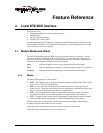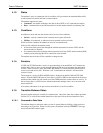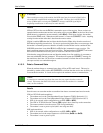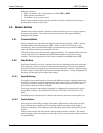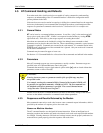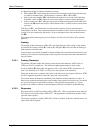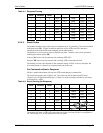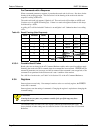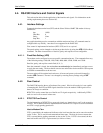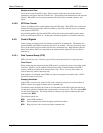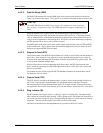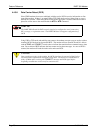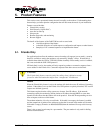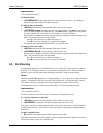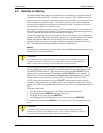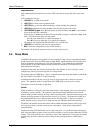
User’s Guide Local DTE/DCE Interface
2110212 Rev 1.0 Page 25
4.4. RS-232C Interface and Control Signals
This sub-section deals with the application of the interface and signals. For information on the
cabling requirements please see Section 10.3.
4.4.1. Interface Settings
Communication between the host (DTE) and the Sierra Wireless DART 300 modem is factory
defaulted to:
bps: 19200
Data Bits: 8
Parity: None
Stop Bits: 1
Any application being used to communicate with the modem and issue AT commands must be
configured this way initially. Auto-baud is not supported in the DART 300.
Flow control is implemented in hardware (RTS / CTS) and is not optional.
The speed settings can be changed to suit the target host device by using the +IPR (I/O Port Rate)
command. The other characteristics of data bits, parity and stop bits are not configurable.
4.4.1.1. Fixed Rate Setting (+IPR)
The modem can be configured to use one specific communication rate. The command allows any
of the following settings: 300, 600, 1200, 2400, 4800, 9600, 19200, 38400, and 57600.
Data bits, parity, and stop bits remain fixed (8, N, 1).
Once the command is issued, the modem does not acknowledge but immediately performs a reset
to apply the new setting. The host should convert rates and monitor for the modem’s OK response
to establish communication at the new rate.
The new setting will be retained and used across all resets and power-cycles until changed by
another +IPR command. The rate is not changed by restoring factory settings using the &F
command.
4.4.2. Flow Control
The DART 300 requires the use of hardware flow control. If the local host device is not capable
of managing this, the RTS and DTR signals should be tied to the modem’s DSR signal to force
them to an always-on condition.
RTS/CTS is used to control the use of the Rx and Tx signals respectively. Additionally, DTR is
used as a receive flow control in data state.
4.4.2.1. RTS/CTS Flow Control
The implementation of RTS/CTS is to treat each signal as a “permission to send” to the respective
receiver. This is not the historical implementation in which RTS is a request to use the transmitter
and CTS is a reply granting permission.
Host to Modem Flow
CTS is controlled by the modem and indicates to the local host that data can be sent to the modem
on the Tx line. This is used in both command and data states. The host device must ensure that
CTS is asserted before sending commands or data on the Tx line. If CTS is de-asserted, the host
must hold traffic until CTS is again asserted (or risk loss of data).



